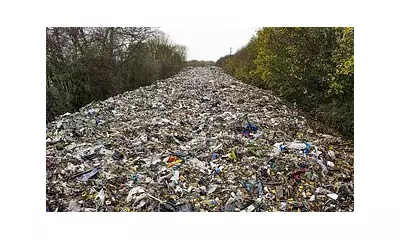
In a stark climate paradox, Indonesia stands as both one of the world's most vulnerable nations to environmental changes and its sixth-largest greenhouse gas emitter. Recent devastating floods in Bali, which claimed 17 lives during the supposed dry season, highlight the urgent challenges facing this Southeast Asian giant.
The Cost of Carbon-Fuelled Growth
Indonesia has achieved remarkable economic expansion, averaging 5% annual growth since 1997. However, this progress has come at significant environmental cost, powered predominantly by carbon-intensive resources. The nation derives more than 90% of its energy from fossil fuels, with coal alone providing 70% of electricity while maintaining its position as the world's largest coal exporter.
The statistics reveal the scale of the challenge: with a population of 283 million, Indonesia releases approximately 1.5 billion tonnes of CO2-equivalent annually, representing about 3.5% of global emissions. Meanwhile, its GDP per capita remains at $5,070 - significantly below the global average of $14,210.
Deforestation and the Palm Oil Dilemma
Beyond energy, land use presents another major environmental challenge. Indonesia produces 55% of the world's palm oil, a sector contributing 4.5% to GDP and employing over 3 million people. Until 2020, the land sector accounted for approximately 40% of Indonesia's emissions, primarily from deforestation and peatland fires.
The country contains 10% of the world's remaining tropical rainforest and the largest area of tropical peatlands of any nation, storing tens of billions of tonnes of carbon. While deforestation rates have decreased to their lowest in two decades, environmentalists worry about backsliding from government programmes that clear rainforest for food estates and expand palm-oil biofuels.
Satellite data now shows new deforestation and fire hotspots emerging in south Sumatra and central Kalimantan, while drained peat swamps create tinder-dry conditions perfect for sustained burning.
Barriers to Green Transition
Despite climate ambitions, Indonesia faces significant structural obstacles. Putra Adhiguna, South-East Asia director at the Institute for Energy Economics and Financial Analysis, notes that although there's a moratorium on new coal plants 'on paper', a loophole permits new 'captive' plants powering nickel smelters and industrial projects.
Research reveals that captive-power capacity has more than doubled over five years, reaching 22.9GW in 2024 - with more than 80% coming from coal-fired plants operating largely outside state oversight.
Adhiguna argues Indonesia must 'dismantle its coal mindset' by removing domestic price caps that keep coal artificially cheap and block renewables from competing. 'Indonesia's renewable growth is really quite abysmal,' he states bluntly.
The drive to become a global supplier of minerals like nickel, vital for electric vehicles, brings jobs and investment but also drives deforestation and pollution in Sulawesi and Maluku - predominantly powered by coal energy.
Climate Impacts and International Responsibility
The consequences of climate change are already severely affecting Indonesian communities. 'Bali was a place that rarely experienced flooding,' explains Made Krisna Dinata, executive director of Walhi Bali. 'Now, we can no longer see or even predict when these seasons will come and go.'
This pattern repeats across the archipelago, with increasing climate-related disasters threatening food security and traditional lifestyles. Urban areas face extreme heat, while coastal regions confront sea level rise, coral bleaching and sinking land.
Indonesia's updated climate plan targets a 31.89% emissions cut unconditionally by 2030 (or 43.2% with international support), representing an 8-17.5% improvement over previous commitments. However, meeting these goals requires at least $470 billion in investment by 2030.
The Just Energy Transition Partnership, a $20 billion pledge from wealthy nations to accelerate coal phase-out, has stalled in bureaucracy. Meanwhile, renewables account for less than 15% of Indonesia's energy mix despite vast potential.
As Adhiguna observes, 'Indonesia is making a boatload of money out of fossil fuel. That money needs to be reinvested in the country for greener opportunities.' With China - Indonesia's largest coal customer - shifting toward renewables, the nation risks being left behind without urgent domestic action alongside international support.





